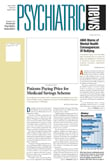What more could you ask for? A medication that effectively and safely relieves many of the symptoms of attention-deficit/hyperactivity disorder (ADHD) and is not a stimulant shows little potential for abuse and can be given as a single morning dose to avoid the need for potentially stigmatizing dosing during school or work.
Eli Lilly and Company believes it has found all of that and possibly more in its new ADHD drug, atomoxetine. Lilly expects to gain approval from the U.S. Food and Drug Administration (FDA) in the first quarter of 2003 to market the drug for treatment of the symptoms of child, adolescent, and adult ADHD.
If approved, it would be the first drug approved for treatment of the disorder in adults.
The proposed trade name for the drug, pending FDA approval, is Strattera. The drug, which originally carried the generic name tomoxetine, had the leading letter ‘a’ added (at the suggestion of the FDA) to help avoid confusion with the cancer drug tamoxifen. According to Lilly research scientist Cal Sumner, M.D., atomoxetine is a highly specific inhibitor of the norepinephrine reuptake transporter, resulting in significant increases in availability of the neurotransmitter in brain synapses.
Current best-guess theory says that ADHD is a constellation of symptoms resulting from a “combination of norepinephrine and dopamine dysfunction,” Sumner explained. “Actually, attention deficit is probably a huge misnomer. This is an organizational dysfunction of the brain, probably affecting multiple areas of the brain. And it is an enduring brain pathology with different signs and symptoms across the life span, depending on [a patient’s] developmental stage, experience, and external support system.”
For decades, the focus has been on stimulant medications such as amphetamines and methylphenidate. These medications, Sumner agreed, have been very useful in treating what he termed the “externalized symptoms” of the disorder—for example, the child who simply cannot sit still, bounces around the room, is impulsive, and is unable to focus and maintain attention—symptoms frankly observable by others.
“Atomoxetine came about as people revisited the point of view that if you could affect only norepinephrine,” Sumner explained, “you might not only get the benefits that you see with the existing stimulant medications, but you might get them at less cost.
“When people ask me about the mechanism of action of this drug, I can easily tell them what the mechanism is. What happens after that initial action is where we start to get into a fuzzier area.”
Because atomoxetine is a “fairly clean” norepinephrine modulator, Sumner believes that the drug is primarily impacting information before it even gets to higher organizational centers, allowing “better information” to reach those organizing centers in the brain. “We are also impacting the organizational centers themselves, modulating neurotransmitter function in the frontal cortex,” which, he noted, impacts the pathology early on in the pathway of the neurotransmitter dysfunction.
“Atomoxetine improves the efficiency of organization and also improves some of the clarity of the brain’s signals,” Sumner said.
In clinical trial data submitted as part of the new drug application and presented at APA’s 2002 annual meeting in Philadelphia in May, atomoxetine was associated with significant improvement in the core symptoms of ADHD, and surprisingly, said Sumner, appears to be equally beneficial in improving core symptoms in the inattentive subtype as well as the hyperactive/impulsive subtype. The efficacy appears to be as good in adults as it is in children and adolescents.
Studies have compared once-a-day dosing with twice-a-day dosing and found that once-a-day dosing is as effective as taking the drug twice a day. The new drug application lists once-a-day dosing, in the morning, with no requirement to take the medication with or without food.
In four short-term (fewer than 10 weeks) clinical trials in children, the only treatment-emergent side effects associated with atomoxetine that are different from those associated with placebo were headache and appetite suppression. In longer studies, appetite suppression has resulted in a mild decrease in weight upon starting the medication; however, over one year, children on atomoxetine showed no significant difference in trends on weight or height curves. In addition, the drug had no affect on sleep.
Atomoxetine does not appear to be associated with the adverse cardiac effects, such as hypertension and tachycardia, associated with other drugs that modulate norepinephrine (venlafaxine or certain tricyclic antidepressants, for example).
“We have a huge unmet need in the understanding of this disorder across the life span, as well as in understanding the impact of medication on this disorder,” Sumner said. “But when something sounds too good to be true, you can just think of it as being true, or you can go back and double your efforts and find the holes in it.”
Holes will undoubtedly appear, Sumner acknowledged, especially given the complexity and comorbidity associated with ADHD. While previous studies excluded patients with comorbidity, studies of patients with other disorders and ADHD are under way.
“At least we hope to find that comorbidities in patients with ADHD are not getting worse on atomoxetine,” Sumner said. “And at best, we’ll be able to say that not only is atomoxetine helpful for ADHD but for other symptoms as well.” ▪
